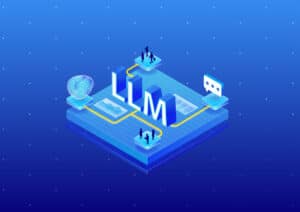
LLMs can enhance recommender systems, drawing insights from large volumes of data to guide next best actions.
Recommender systems play a crucial role in various industries, including e-commerce, finance, media, communications, and entertainment. These systems help businesses understand specific customers’ preferences and provide personalized recommendations that cater to individual needs. The ultimate goal is to improve customer satisfaction, loyalty, and overall revenue. Traditional recommender systems are based on clustering approaches, content, and collaborative filtering, trying to match users with content or with each other. Innovations in areas like contextual bandits have helped make these systems dynamic and drill down to individual customers to drive a model-of-one or digital twin vision. One key limitation of these systems is the inability to make use of tremendous amounts of text and image data in enterprises. Also, with the dynamic nature of business, new offers and consumers keep getting added continuously, leading to cold start problems – lack of prior knowledge to make a recommendation.
One of the most promising approaches to enhance recommender systems is by using large language models (LLMs). LLMs have the potential to revolutionize how businesses understand their customers and provide personalized recommendations – particularly on unstructured data in the form of text. In this article, we will discuss how large language models can power recommender systems for the next best action, focusing on understanding customers and matching offers in a zero-shot manner. Zero-shot matching is a key advantage that LLM brings due to the vast amount of data used for pre-training these models. These models get an amazing understanding of the context of words and can easily find powerful matches.
Understanding Customers from Text
Large language models are pre-trained on massive amounts of textual data, enabling them to understand and generate human-like text. This capability allows LLMs to analyze customer data in text form and extract valuable insights from it. This data could be conversations with support professionals, social media posts, email communication, and more. Here are a few ways LLMs can help understand customers better:
- Sentiment Analysis: LLMs can analyze customer reviews, social media posts, and other text data to understand the sentiment behind the text. This information can help businesses identify customer satisfaction levels, concerns, and areas for improvement.
- Customer Intent Detection: By analyzing customer inquiries or support tickets, LLMs can determine the intent behind the text and categorize them accordingly. This helps businesses understand common customer issues and prioritize their response.
- Customer Profiling: LLMs can use text data to create detailed customer profiles. By understanding customers’ preferences, interests, and behaviors, businesses can segment their audience and target them with personalized offers and recommendations.
See also: Recommender Systems: Why the Future is Real-Time Machine Learning
Matching Offers in a Zero-Shot Manner
One of the key advantages of LLMs is their ability to adapt to new tasks without additional fine-tuning, known as zero-shot learning. This feature allows LLMs to understand and match offers with customers efficiently. Here’s how:
- Natural Language Understanding: LLMs can process textual descriptions of products and services, understanding their features, benefits, and target audience. This allows the model to create a comprehensive understanding of the available offers.
- Matching Customer Profiles with Offers: Using the customer profiles generated from text data, LLMs can match customers with the most relevant offers. This is achieved by comparing the customer’s preferences and needs with the features and benefits of each offer, resulting in a highly personalized recommendation.
- Generating Personalized Messages: LLMs can go beyond simply matching customers with offers; they can also generate personalized messages to accompany these recommendations. These messages can highlight the key benefits of the recommended product or service, making it more appealing to the customer.
Benefits of Using LLMs in Recommender Systems
- Improved Personalization: LLMs can analyze vast amounts of textual data to create detailed customer profiles, allowing businesses to provide highly personalized recommendations tailored to individual preferences and needs.
- Enhanced Customer Experience: By understanding customer sentiment and intent, businesses can address customer concerns, resolve issues, and ensure a positive customer experience.
- Increased Efficiency: LLMs can match customers with offers and generate personalized messages in a zero-shot manner, reducing the need for manual intervention and streamlining the recommendation process.
- Scalability: With their ability to adapt to new tasks without additional fine-tuning, LLMs can easily scale with the growth of the business and the expansion of its product or service offerings.
- Data Quality: Organizations often struggle with data quality issues with structured data, and extracting knowledge from text can augment this existing structured data.
Conclusion
Large language models hold immense potential for revolutionizing recommender systems and next best action strategies. By understanding customers through text data and matching offers in a zero-shot manner, businesses can provide highly personalized recommendations, improve customer satisfaction, and drive revenue growth. The huge amount of text data that would remain in enterprise data lakes awaiting human consumption – can now be processed, and valuable insights can be derived.





























